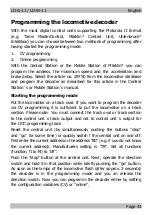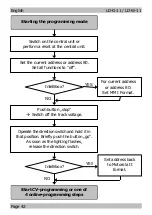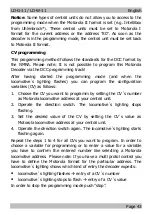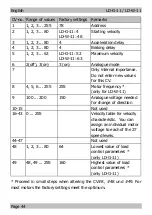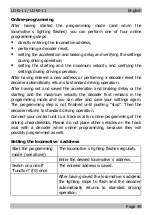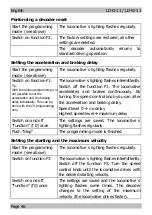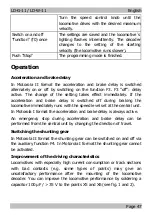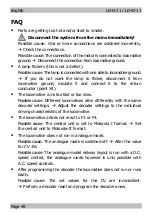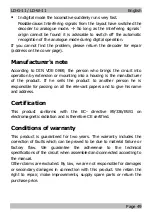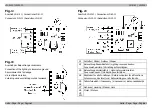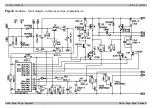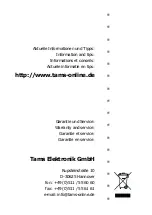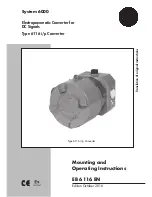
LD-G-11 / LD-W-11
English
Page 39
!
!
!
Disconnect any existing diodes in the leads to the lamps. Connect the
lamps for forward motion to X3 and the lamps for reverse to point X2.
If the lamps are already connected with one side to locomotive ground,
the connection is complete. If not, connect the second side of the
lamps to the return conductor (point X4).
Caution:
The return conductor for all functions (point X4) must under no
circumstances be connected to locomotive ground. Possible short
circuit! The locomotive decoder will be damaged in operation.
Tip:
If the second side of the lamps is connected to locomotive ground
the lamps often flicker in operation. You can avoid the flickering of the
lamps if you connect the second side to the return conductor (point X4)
instead of locomotive ground.
Caution:
If you connect the lamps to the return conductor for all functions (point
point X4), the lamps must be insulated. The lamps must not make
contact with metal parts of the locomotive. Possible short circuit! The
locomotive decoder will be damaged in operation.
Connecting the LEDs
The function outputs of the locomotive decoder switch against decoder
ground. For that reason you must connect the cathode (-) of the LED to
the output of the relevant function.
Caution:
If you use light-emitting diodes (LEDs) you must always operate them
via a series resistor.
LEDs are available in many different models. There are LEDs with 2-5
mA, but also LEDs with 15-30 mA power consumption. The series
resistor limits the current flow of the LED and will need to be calculated
for each model. Ask for the max current rating when buying your LEDs.
You can connect several LEDs in parallel to each output. In this case
every LED must have a series resistor of its own. If you connect several
LEDs to one output in series, only one series resistor is needed.

















